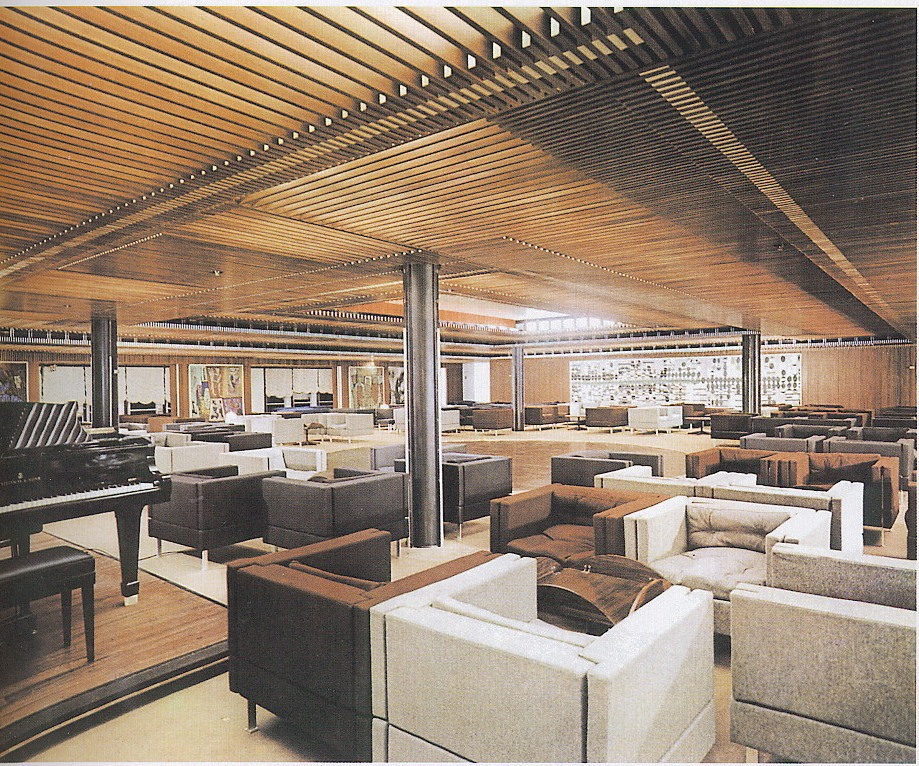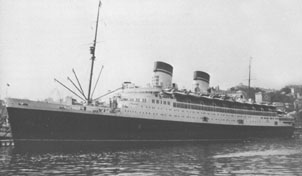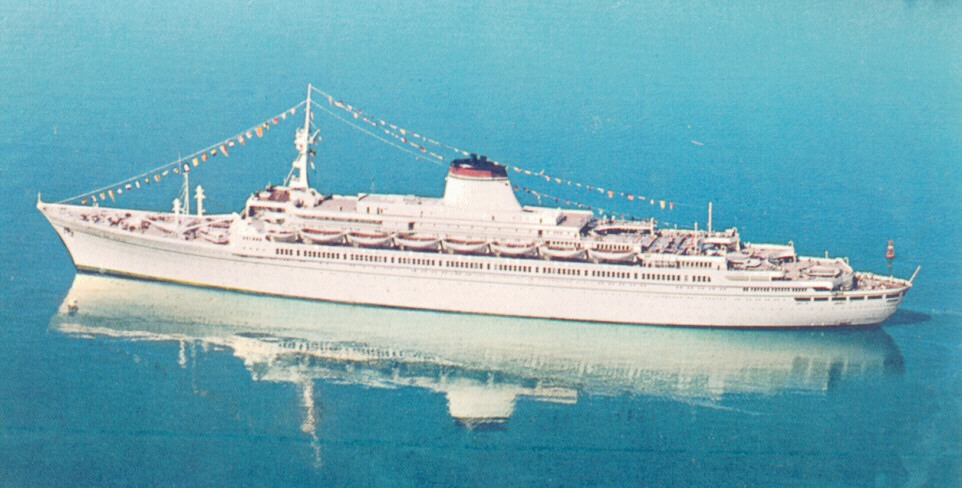A short history of the Italian Line
In the late 1920’s Italy’s Il Duce, fascist dictator Benito Mussolini, decided that his country should me among the leading ones in the world on all areas, be it science, military, or the high seas. Up to this point all prestigious ships on the Atlantic had since the latter half of 19th century been either British or German. Indeed at this point German Norddeutcher Lloyd (North German Lloyd, NDL) was building two ships that were to be the fastest ships of the time as well as the biggest German ships to date: the Bremen and the Europa.It was a fact at the time that transatlantic liners of each country were their showcases to the world, Mussolini decided that for the first time in it’s history, Italy would build a pair of large, fast and prestigious liners to compete on the Trans-Atlantic trade.
Up to this point Italy had not had a strong shipping company under it’s flag. Il Duce came to the conclusion that three of Italy’s main companies, NGI (Navigazione Generale Italiana), Lloyd Sabaudo and Cosulich Line, would be merged to form a single, strong company, the Italia di Navigazione (or Italian line). Already before the merger Sabaudo and NGI had received subsidiaries to start constructing two new superliners for Italy. In 1927 Mussolini had announced that soon Italy was to commence building “two ships which the whole world has been waiting for,” later named Rex and Conte di Savoia. Of these two the Rex (the ‘King’) would be faster and larger, while Conte di Savoia was to be more luxurious as well as stable. Both ships were decorated in a classical style while the norm of the time was the Art Deco or Liner Style that had been premiered onboard the French Line’s Île de France in 1927.
The Rex was launched in 1932, in the tenth anniversary of Mussolini’s rise to power. She eventually took the Blue Riband into possession a year later, only to lose it to French Line’s gigantic Normandie in 1935.The Lido Ships continued to provide transatlantic service until 1939 and the start of the World War II. Conte di Savoia ferried troops from the Italian peninsula to Libya, but apart from that the ships remained inactive during the war.
Italy’s armistice with the allies did not provide any help to Italy’s laid-up ships, since Germany begun to occupy Italy. During this phase all Italy’s main ships, Rex, Conte di Savoia, Roma and Augustus, were either bombed by the Allies or scuttled by the Germans. The Augusts was the first ship to have a lido deck with outdoor pool. All in all, Italy had lost 31 of it’s 37 passenger ships. Two of the oldest ships, Saturnia and Vulcania, continued to provide service until 1965, when Michelangelo and Raffaello entered in service.
When Italy had, at least partially, recovered from the war in 1949, Italian line received subsidiaries from the Italian government to build two new moderate-sized vessels (tonnage of approximately 30 000 tons) to serve in the North-Atlantic run. The first of these ships, Andrea Doria, started her maiden voyage from Naples to New York in January 14. 1953. Her sister, Cristoforo Colombo, took the seas a year later. She was identical to Andrea Doria, maybe her furnishing were only a little less sought.Andrea Doria was the more celebrated of the sisters, favoured by both Italian and American passengers of the time. However, she would not be the pride of Italy for long. In July 25, 1956 the Andrea Doria was accidentally rammed and sunk by Swedish-American Line’s ship, the Stockholm. Italia Lines was devastated from losing their prime vessel. After recovering from the shock Italia Lines’ directors soon ordered a replacement for the Andrea Doria. The result, the 233 meter long Leonardo da Vinci, was launched in 1960. Based on the same basic design as the Andrea Doria she was larger than her predecessors (with tonnage of 33 000 tons). Actually Leonardo da Vinci is often unfairly neglected, but she could be considered the “mother” of Michelangelo and Raffaello. She was a very advanced ship for the time, boasting air conditioning throughout the ship private toilets in all cabins, retractive stabilizer wings, and two independent engine rooms both capable of moving the ship on their own if the other engine room was somehow damaged. All the life boats had a propeller and the alighting mechanisms allowed to alight them on the sea also if the ship suffered of a lateral disbandment up to 25°. The absence of this feature didn’t allowed to use half of the life boats on Andrea Doria. Many of the features of the Leonardo da Vinci later surfaced on the Michelangelo and Raffaello.
Leonardo da Vinci was also the first passenger ship predisposed to be transformed to nuclear propulsion.

In the early 1960’s Italia Line even announced that by 1965 at latest Leonardo da Vinci would be equipped with nuclear reactors to provide power instead of traditional steam turbines. This never came to pass, and it should be noted that Leonardo da Vinci was the most expensive of Italian line’s ships to run, as the hull design of the Andrea Doria class was not suitable for such large size liners and this led to high fuel consumption.
In the route between Northern Europe and the US, the jet aeroplane was taking more and more of the liners passengers in 1958 half of the people who crossed the Atlantic did it by air. But the effects of the aeroplane were much smaller in the Mediterranean area in late 1950’s, and Italian Line’s interest towards two new superliners grew.

